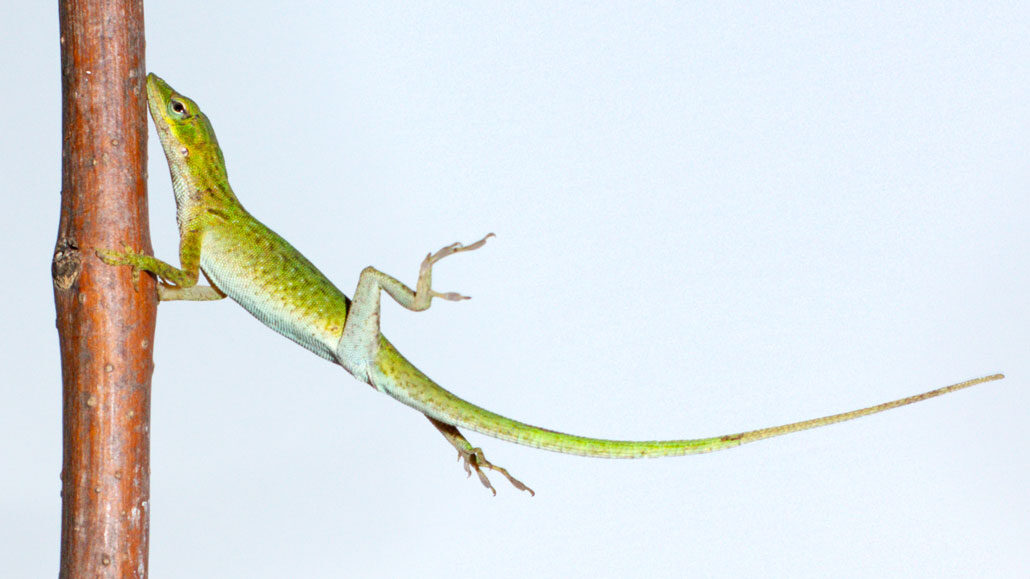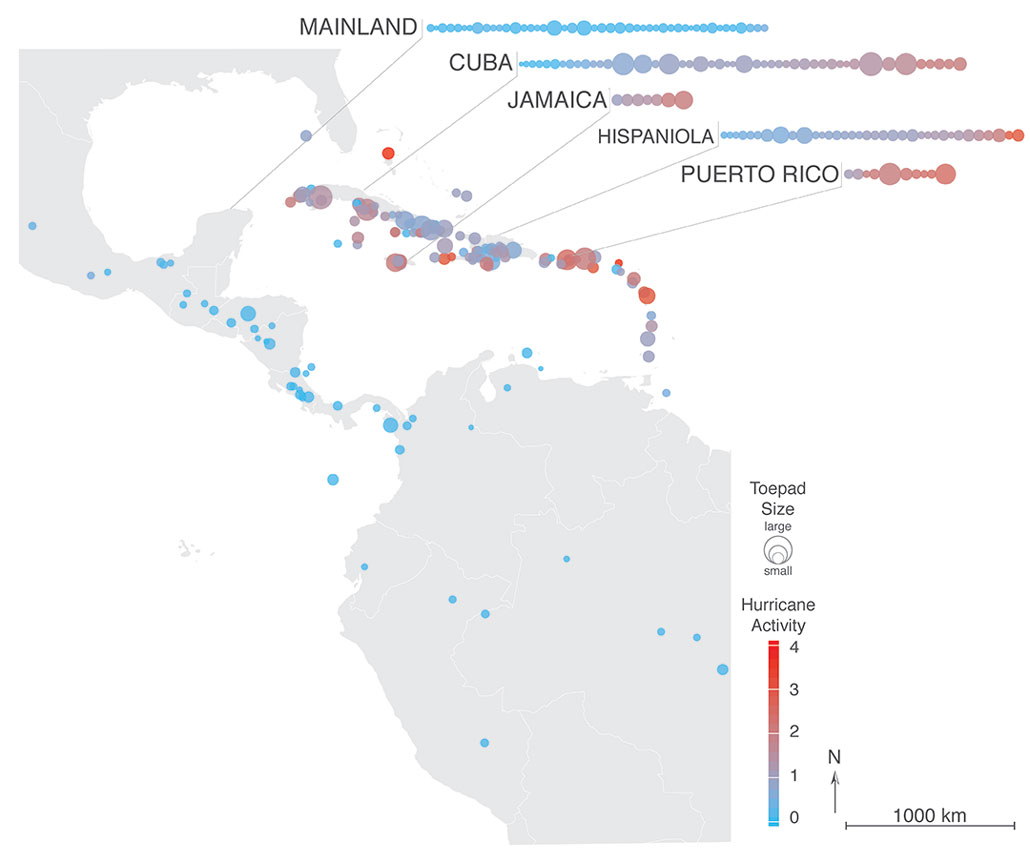Analyze This: Hurricanes may help lizards evolve better grips
In places blasted by high winds, lizards have larger toepads that may improve their ability to hang tight

This Anolis carolinensis lizard hangs on tight during a blast of wind that simulates hurricane-force winds.
C.M. Donihue
During a hurricane, strong winds blast the shore. Gusts can reach speeds of 250 kilometers (155 miles) per hour or more. Some animals, including lizards, may get blown away. But with a good grip, others can weather the storm. A new study suggests that such hurricanes helped lizards evolve traits that allow them to hang tight.
Colin Donihue is an ecologist who studies evolution at Washington University in St. Louis, Mo. He and his colleagues had been studying two populations of Caribbean anole (Anolis scriptus). This work focused on the island territory of Turks and Caicos. Then, in 2017, hurricanes Irma and Maria pummeled islands in the Caribbean Sea. The extremely powerful storms struck within a few weeks of each other.
“We realized that we had this unique … opportunity,” recalls Donihue. His team quickly began documenting the hurricanes’ effects on Caribbean anoles. The feet of surviving lizards tended to have larger toepads than those from before the hurricanes, they found. “That was a surprise,” Donihue says. It suggested hurricanes might play a role in natural selection.
Lizards that lived through a hurricane might be better adapted to making it through such storms. For instance, their toes might be grippier.
Hairs cover ridges on the anoles’ toepads. Those hairs help lizards latch onto a tree or perch. In general, larger surface area means a stronger clinging force, Donihue explains.
However, it was not clear that extreme weather was pushing lizards to evolve better grips. Evolution can be a long, slow process. And evidence of long-term changes can be difficult to find. One approach is to study how a population changes over a very long time. But Donihue and his team took a different tack.
Caribbean islands each have their own history of hurricanes. Some have been hit frequently. Others have seen less storm activity. The researchers thought higher storm frequency might shape where lizards evolved to have better grips.
The team studied 188 species of anoles. Their populations stretcheed from Florida to Brazil. From photos of museum specimens, the researchers sized up the lizards’ toepads. The researchers also reviewed hurricane data collected over the last 70 years. They came up with a measure for hurricane activity experienced by each species based on how many times it was hit by these severe storms.
“It seems that hurricanes are immensely important,” Donihue says. Hurricanes indeed appear to shape lizard diversity by helping them evolve clingy toes. The team shared its findings April 27 in the Proceedings of the National Academy of Sciences.

Data Dive:
- Describe lizard toepad sizes in places with more red and purple spots. Compare those with sizes in areas with more blue spots.
- What is similar about the locations of species that experience low hurricane activity?
- What is similar about locations of species that experience high hurricane activity?
- What overall message do you draw from these data?
- Why is it helpful to show these data on a map? Can you come up with another way to present this information?
- Why do you think the scientists grouped data into “mainland” and four islands?







